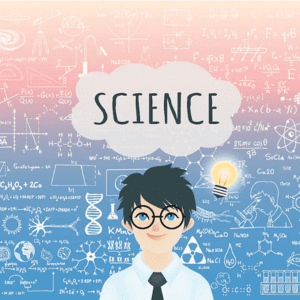Overview: Cubes & Dice | General Intelligence and Reasoning for SSC CGL PDF Download
| Table of contents |

|
| Scope of the Topic for SSC and RRB |

|
| Dice – Basic Concepts |

|
| Cube and Dice Tricks |

|
| Sample Questions – Cube and Dice Tricks |

|
Scope of the Topic for SSC and RRB
This topic is a regular topic in exams SSC CGL, SSC CHSL, RRB NTPC, etc. For SSC CGL, in tier I and tier II; for SSC CHSL in tier I and for RRB NTPC in 1st Stage Computer Based Test (CBT) and 2nd Stage Computer Based Test (CBT) the questions on cubed and dice are often asked.
The types of questions asked are:
(i) Constructed and deconstructed dice
(ii) Observations of an open die
(iii) Finding the opposite side
(iv) Odd one out
Generally, around 2 – 3 questions are asked. The difficulty level of these questions is easy or easy-moderate.
Dice – Basic Concepts
Die is a small, throwable object with marked sides that can rest in multiple positions. Dice is a cube. It has a different number placed on each side.

Basic properties
- There are six faces, eight vertices, and twelve edges in a cube.
- Four faces are adjacent to one face.
- There are three pairs of opposite faces.
- Only three sides of a cube are visible at a time and these sides can never be on the opposite sides of each other.
Open Dice
The following diagram is of an open dice when it is flattened out.

- 2 is the top face of the cube.
- 5 is the bottom face of the cube.
- 4, 6, 1, and 3 are the side faces of the cube.
- Faces 6 and 1 are always opposite to each other.
- Faces 4 and 2; 5 and 2 do not have a common side since these faces are opposite to each other.
Observation of an Open Dice
Variations of an open die are as follows :
A)

Faces 1 and 6, faces 4 and 3, faces 5 and 2 are opposite to each other.
B)

Faces 1 and 6, faces 4 and 3, faces 5 and 2 are opposite to each other.
C)

Faces 1 and 6, faces 4 and 3, faces 5 and 2 are opposite to each other.
 |
Test: Dice- 1
|
Start Test |
Cube and Dice Tricks
To master various Cube and Dice Tricks, one should learn the two basic rules of cubes and dice. Most of the questions asked can be addressed by using these rules.
Rule 1
If two dice are given in different orientations but one face is common. Then the remaining surfaces are opposite to each other.

Here, face 5 is the common face.
Faces 3, 6, 4, and 1 are adjacent to the face 2. Hence, face 2 is opposite to face 5 here.
Faces 3 and 4 and faces 6 and 1 are opposite to each other.
Rule 2
If two dice are given in different orientations but two faces are common. If out of those two common faces one face is in the same position, then the faces which are not common are opposite to each other.

Here, faces 1 and 3 are common faces.
Face 1 is at the same position.
Face 5 and 6 are not common.
Hence, faces 5 and 6 are opposite to each other.
Sample Questions – Cube and Dice Tricks
Question 1: When the following figure is folded to form a cube, then which of the following shows a pair of faces opposite to each other?
 (a) 2 – 3
(a) 2 – 3
(b) 4 – 6
(c) 5 – 6
(d) 5 – 2
(e) 4 – 2
Ans: (4)
Here, faces 1 and 6, faces 4 and 3, faces 5 and 2 are opposite to each other.
Question 2: When the following figure is folded to form a cube, which of the following options can be the folded cube?


(a) Only I
(b) Only II
(c) Only III
(d) Both I and II
(e) Both II and III
Ans: (b)
In the given flattened-out figure, faces 1 and 6, faces 4 and 3, faces 5 and 2 are opposite to each other.
In figure I faces 3 and 4 are adjacent to each other and in figure III, faces 2 and 5 are adjacent to each other.
Hence, figures I and III cannot be the folded cube.
In figure II, faces 6, 3, and 5 can be adjacent to each other. Figure II can be the folded cube.
|
177 videos|129 docs|197 tests
|
FAQs on Overview: Cubes & Dice - General Intelligence and Reasoning for SSC CGL
| 1. What are cubes and dice? |  |
| 2. How many faces does a cube have? |  |
| 3. How many faces does a dice have? |  |
| 4. What are some common uses of cubes and dice? |  |
| 5. How can cubes and dice be used for probability calculations? |  |

























